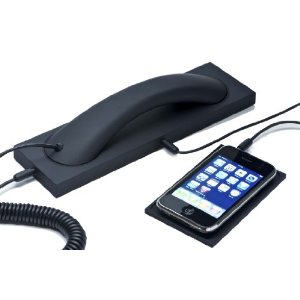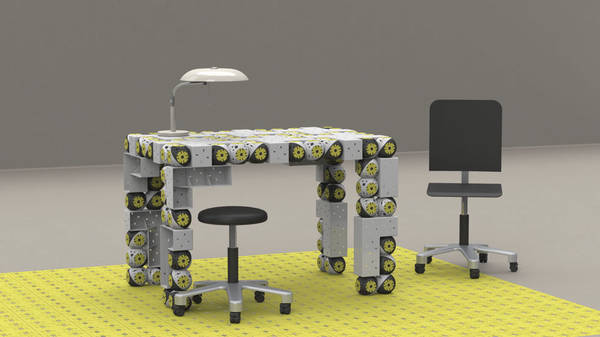
Reposted from
Cool Tools.
The GeekDesk is the best and most versatile desk I have found for my home office. It uses an electric motor to switch from sitting to standing position, and after nearly a year of using other standing desks I can say that it is one of the best investments anyone can make if they are interested in an adjustable desk.
My foray into standing desks began when I started working from home more often. I found that when I was sitting at work I would easily become distracted and more often than not lethargic. After reading several articles about the perils of sitting around all day I decided it was probably in my best interest to get a standing desk. My first standing desk was a podium I found on craigslist for $10. It was not adjustable, had an angled surface, and wasn't the best solution. But for the cost, it served me well. I learned how to stand all day, and the small footprint of the podium meant that I could keep my regular desk without sacrificing too much space. The difference between sitting and standing was immediately noticeable. I was much more likely to walk away from my desk and do something that needed to get done, I found that I didn't tire as much, and that my back no longer hurt from long days in a soft cushy chair. I was a standing desk convert.
Given the limitations of the podium I then decided to replace it with a used AnthroCart desk: a solid American-made adjustable desk with an amazing life-time warranty. Seeing how it was adjustable I was able to fine-tune the height so that it made for easy typing. The desk was composed of three aluminum poles that have slots that range from 24" to 30" (and up to 48" with extensions) in height where you could screw the work surface in. It had a large 3'x3' flat surface that allowed me to add an external monitor and a printer to my setup. However, it also meant that I had to say goodbye to my chair and sitting desk. My conversion to full-time standing desk was pleasant, but there were times when I wished I could sit down to write longer pieces.
All of this explains why I am so happy to have discovered the GeekDesk. Simply put, it is a traditional two-legged desk frame that uses an electric motor to raise or lower the working surface from 26" to 46.5" and anywhere in-between. It can lift up to 175 pounds, and it rises and falls at 1" per second.
The desk itself is made up of two steel legs connected by a cross bar that contains the electric motor and rack-and-pinion lift mechanism. The top of the desk is screwed on to the legs. GeekDesk sells the legs separately for those interested in attaching their own surface.
I have the slightly smaller GeekDesk Mini. It is identical to the GeekDesk except that it comes with a shorter crossbar that is 37.75" wide compared to the standard 61.42" model. It is more than enough space for me as I have a fairly compact setup including a 15" laptop, and a 24" external monitor.
To raise or lower the desk there are controls attached to the underside of the working surface. They remain out of the way, and are very easy to use. Simply push the button to activate, and click up or down on the toggle. It is a smooth movement and you can do it with everything on your desk without a fear of spills, or toppling monitors.
While my AnthroCart desk served me well, I realized that having the versatility of being able to sit and stand at the same workspace was really valuable to me. The biggest downside of this flexibility is that the temptation to sit is ever present. Since adopting the GeekDesk I do find myself sitting down more often than I would if I didn't have the option. I am undecided about whether this is a good or bad thing, but if you find that you have low self control then it is possible this desk isn't for you.
I love being able to sit and stand at my workspace, and I believe it has improved my general well being and happiness while working from home. A word of warning: anybody interested in switching to standing all day should, as with anything bio-mechanical, take it slow and make sure not to cause too much strain. I have had friends who have made the switch too quickly complain about back strain, foot pain, and tired legs. This goes away, but can easily be avoided by slowly easing into standing all day. And I strongly believe the GeekDesk represents one of the absolute best ways to do so. -- Oliver Hulland
[Note: GeekDesks ship by freight, only to the U.S. and Canada.-- OH]
GeekDesk Mini
Frame dimensions: 37.75" wide x 22" deep
Desk Surface: 47.25" wide x 31.5" deep
$525 for the frame (plus $85-$180 for shipping)
$749 for the frame and top (plus $110-$310 for shipping)
GeekDesk
Frame dimensions: 61.42" wide x 22" deep
Desk surface is 78.75" wide x 31.5" deep
$799 for the frame and top (plus $110-$310 for shipping)
Available from and manufactured by GeekDesk
































